iPhone 17 Pro Review: Practicality over gimmicks
We may earn a commission if you make a purchase from the links on this page.

For years, Apple was known as the company that puts design first, and practicality second. Super thin iPhones became the symbol of the early Apple design era, led by design hall of famer Jony Ive.
All of that has slowly but surely changed in the past few years, after Ive left the company. And it culminates in 2025 with the new iPhone 17 Pro, which feels like a device that is the complete reversal of that trend. It's thicker, it's heavier, it has a bright orange color for a change, and it switches from a fancy titanium shell to a new aluminum unibody, which dissipates heat better. It's just more practical.
But what's hiding beneath the vibrant orange surface? And isn't this just another iPhone that ultimately doesn't differ much from all the others before it?
In our PhoneArena Review Rating, the iPhone 17 Pro scores 7.9 points, a slight upgrade over the 7.7 score of the 16 Pro. A lot of that comes from just the boost in performance speeds and charging, while the camera changes have not affected the scoring much as colors and dynamic range remain largely the same.
Also read:
iPhone 17 Pro Specs
A big boost in RAM and storage
Let's kick things off with an overview of the iPhone 17 Pro specs:
|
|
|
| Apple iPhone 17 Pro | Apple iPhone 16 Pro |
| Dimensions | |
|---|---|
| 150.0 x 71.9 x 8.75 mm (~9.9 mm with camera bump) | 149.6 x 71.5 x 8.25 (~12.25 mm with camera bump) |
| Weight | |
| 206.0 g | 199.0 g |
| Size | |
|---|---|
| 6.3-inch | 6.3-inch |
| Type | |
| OLED, Variable 1-120Hz | OLED, Variable 1-120Hz |
| System chip | |
|---|---|
| Apple A19 Pro (3 nm) | Apple A18 Pro (3 nm) |
| Memory | |
| 12GB (LPDDR5)/256GB 12GB/512GB 12GB/1TB |
8GB (LPDDR5)/128GB (NVMe) 8GB/256GB 8GB/512GB 8GB/1024GB |
| Type | |
|---|---|
| 4252 mAh | 3582 mAh |
| Charge speed | |
| Wired: 40.0W Wireless: 25.0W | Wired: 27.0W Wireless: 25.0W |
| Main camera | |
|---|---|
| 48 MP (Sensor-shift OIS, PDAF) Aperture size: F1.8 Focal length: 24 mm Sensor size: 1/1.28" Pixel size: 1.22 μm | 48 MP (Sensor-shift OIS, PDAF) Sensor name: Sony IMX903 Aperture size: F1.8 Focal length: 24 mm Sensor size: 1/1.28" Pixel size: 1.22 μm |
| Second camera | |
| 48 MP (Ultra-wide, Sensor-shift OIS) Aperture size: F2.2 Focal Length: 13 mm Sensor size: 1/2.55" Pixel size: 0.7 μm | 48 MP (Ultra-wide) Sensor name: Sony IMX972 Aperture size: F2.2 Focal Length: 13 mm Pixel size: 0.7 μm |
| Third camera | |
| 48 MP (Telephoto, OIS, PDAF) Optical zoom: 4.0x Aperture size: F2.8 Focal Length: 100 mm Sensor size: 1/2.55" Pixel size: 0.7 μm |
12 MP (Telephoto, Periscope, Sensor-shift OIS, PDAF) Sensor name: Sony IMX913 Optical zoom: 5.0x Aperture size: F2.8 Focal Length: 120 mm Sensor size: 1/3.06" Pixel size: 1.12 μm |
| Front | |
| 18 MP (Time-of-Flight (ToF), Autofocus, HDR) | 12 MP (Time-of-Flight (ToF), Autofocus, HDR) |
See the full
Apple iPhone 17 Pro vs Apple iPhone 16 Pro specs comparison
or compare them to other phones using our
Phone Comparison tool
The first thing you notice when you look at this new iPhone has got to be the color, especially if you look at the striking Cosmic Orange model. This year, Apple limits itself to only three colorways: a bright Silver one, a darker Deep Blue model, and that unmistakable orange one.
What's notably missing is a black model, which we've always had, but Apple execs argue that the Deep Blue version is already quite dark and will please those looking for a darker shade. While we tend to agree, we also know a few people who religiously stick with a true black color.
Then the second thing that you cannot miss is that camera island on the back. Apple being Apple, it calls this a "plateau", a pompous name for what most people would just name a giant camera bump. Call it whatever you want, it's not a new concept. The point of this larger camera bump is to allow for a bit more volume to squeeze components in and leave space for a bigger battery. And we approve — practicality!
All of that new design is enabled by a new aluminum unibody. Having this unibody structure helps a lot with the durability of the phone. Instead of having the whole backside made of glass, we now have just the lower part being glass, and the rest is all a part of that aluminum unibody. Less glass on the back means a lower chance of cracking it, and ultimately — happier users. Yep, you guessed it right, it's practical design!
One downside of an aluminum unibody, however, is that aluminum can be scratched easier than titanium or stainless steel. YouTuber JerryRigEverything reveals that the sharp edges of the camera plateau are a weak point in particular. This will not be noticeable on the silver model, but it will be seen on the blue or orange ones. Don't forget that aluminum also deforms far easier than titanium or steel, and we've already seen a few images of dropped iPhone 17 Pro with a ding on the aluminum frame.
On the plus side, you now have Ceramic Shield for the glass insert on the back, meaning that part will be better protected against scratches.
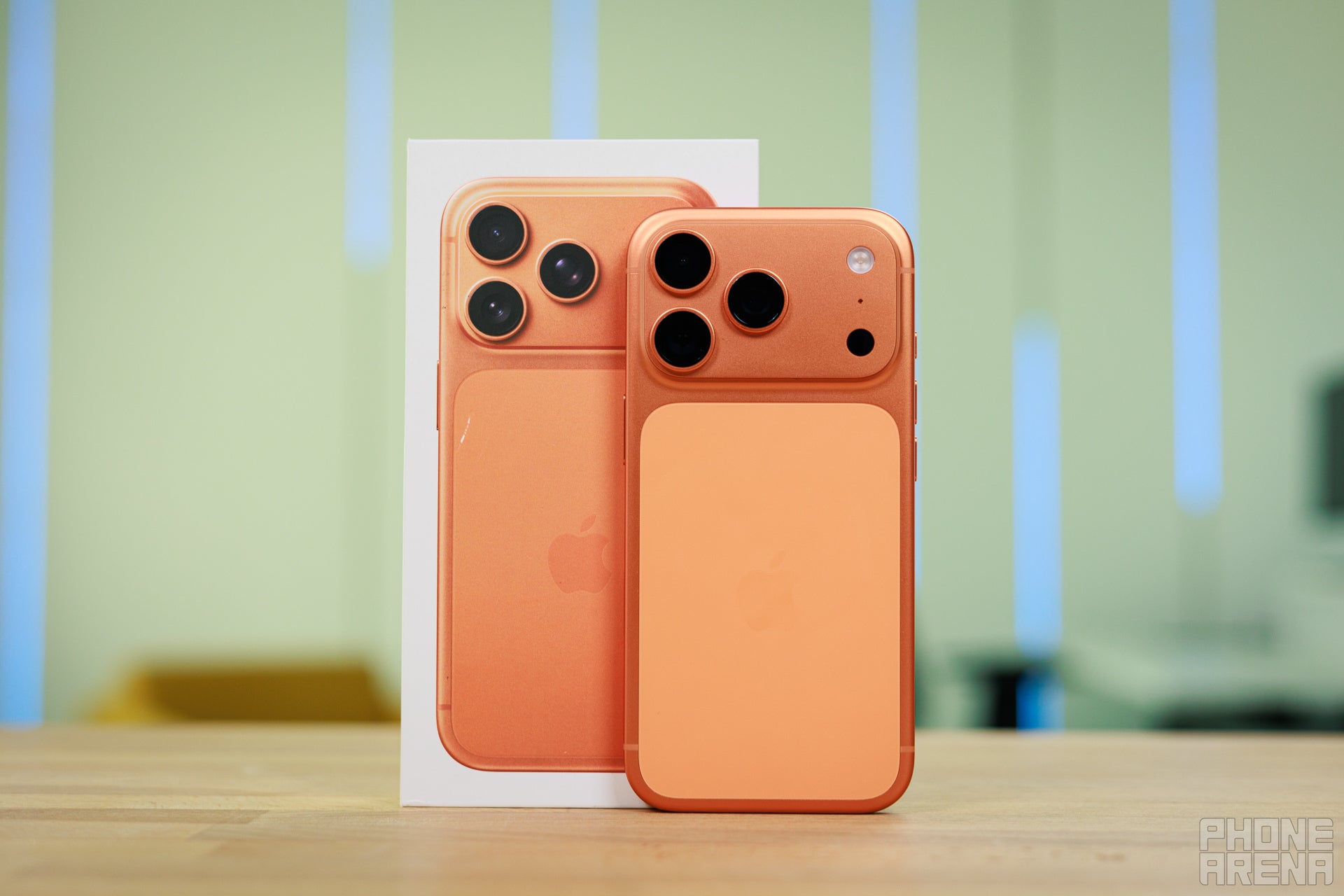
As for the unboxing, there is nothing new here, the unboxing experience is just like any other recent iPhone. You've got a slim box, the phone in it, a braided charging cable and the usual user manuals. This year, the 17 Pro supports faster, 40W charging, but there is no charger included in the box, so you might actually need a new charging brick if you want to benefit from the faster speeds. There is no case or pre-installed screen protector either.
With a 6.3-inch ProMotion screen, the 17 Pro display size is unchanged from the previous model.
The big new feature is the increased peak brightness. All iPhone 17 models can now hit 3,000 nits of peak brightness, and with better cooling, they don't go dim outdoors quite as fast.
There is also a new seven-layer anti-reflectivity coating, which does a better job reducing outside reflections. It is a very subtle effect though, nowhere nearly as powerful as what we have on the S25 Ultra.
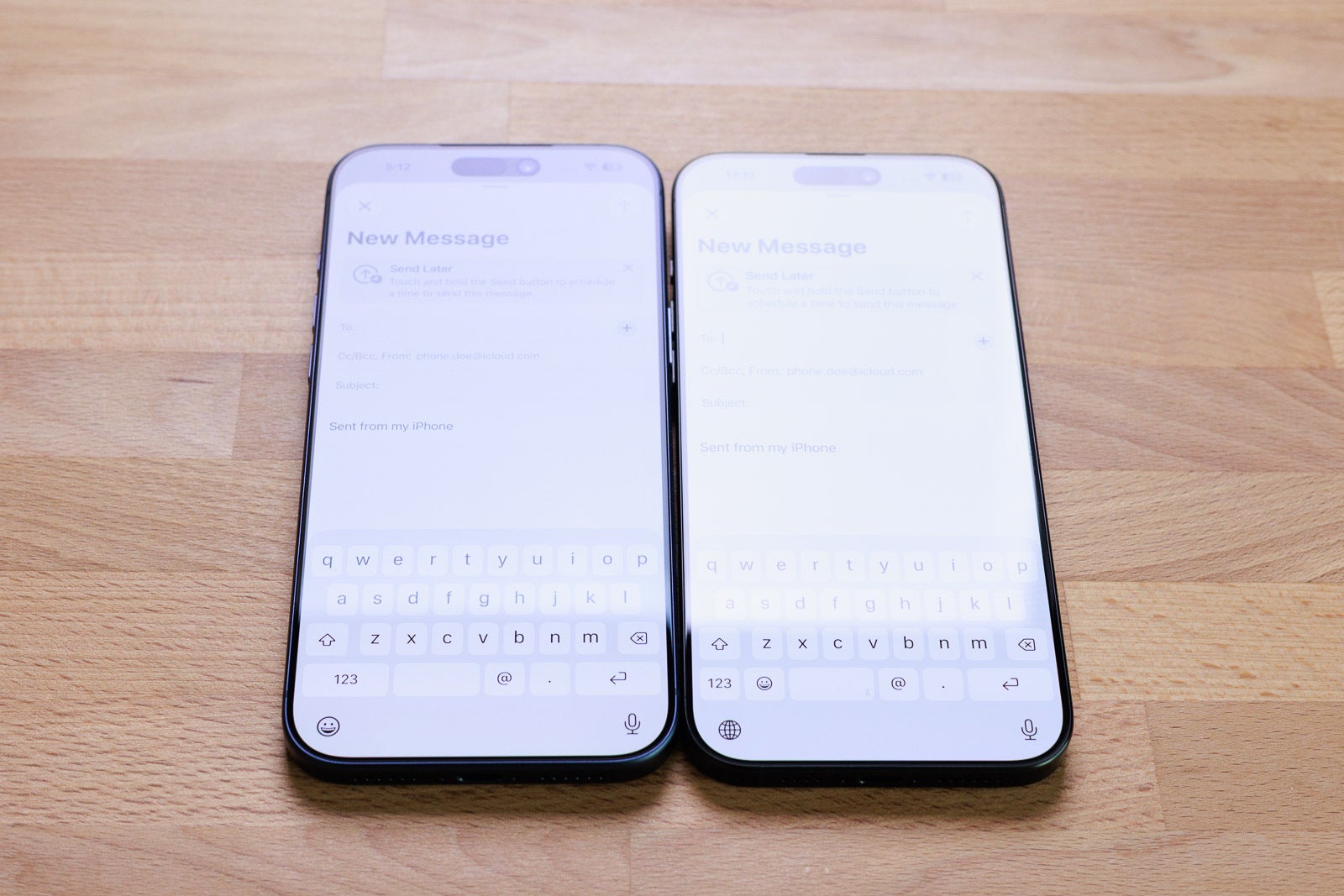
All iPhone 17 models come with new anti-reflection coating on the screen (iPhone 17 Pro Max on the left, 16 Pro Max on the right)
Biometrics on the iPhone 17 Pro are unchanged, as it uses the same Face ID sensor as in all recent iPhones.
iPhone 17 Pro Camera
New 4X telephoto camera is great news
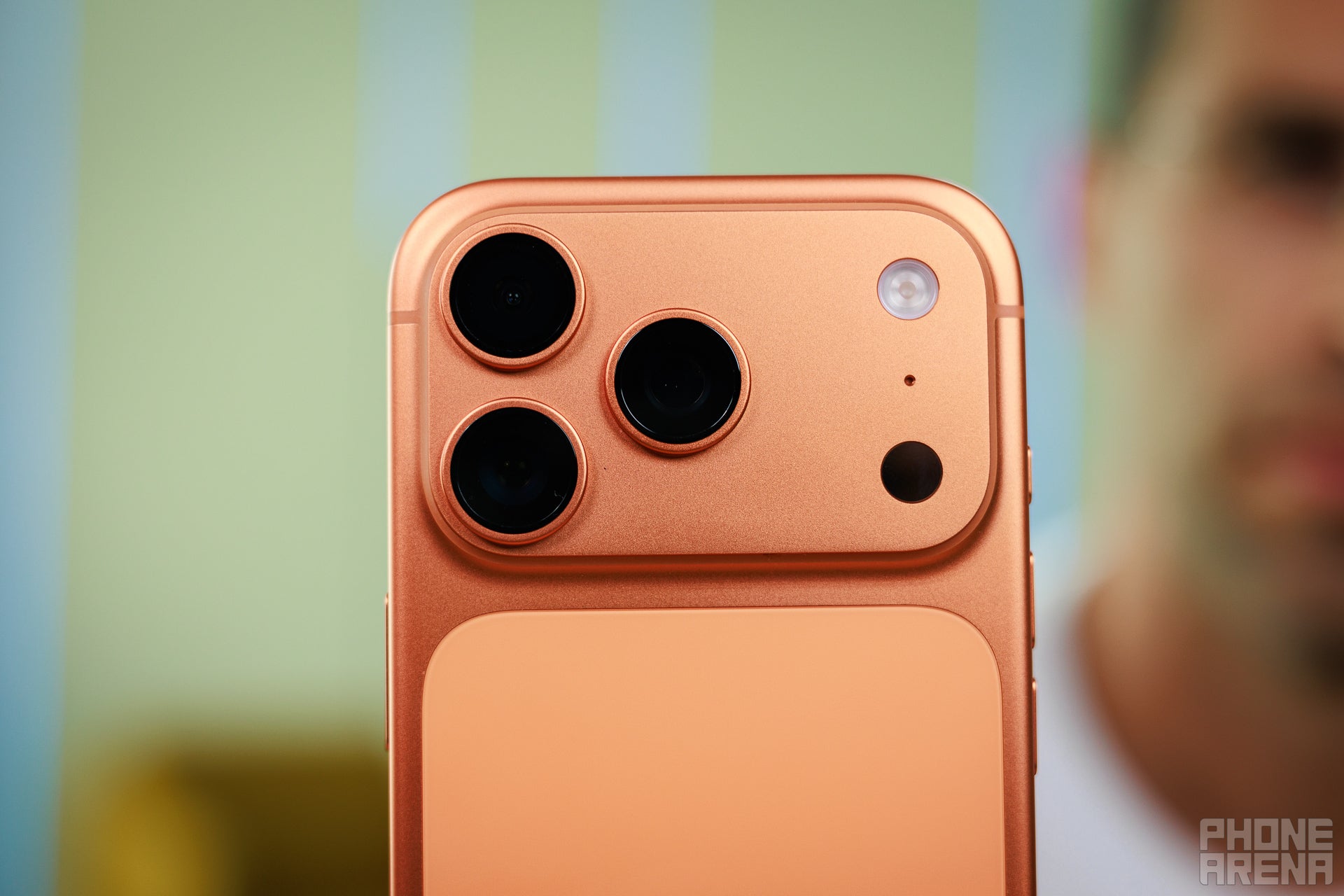
The iPhone 17 Pro camera looks bigger and more impressive in its new "plateau" housing, but the main and ultra-wide cameras have actually not changed from last year.
The thing to remember here is that there are three cameras on the back, full stop. Apple likes to advertize that these three cameras behave like nine cameras (implying that it uses software tricks to simulate different lenses). But that does not make a 2X sensor crop its own lens, and you can still notice the difference between a sensor crop and a true 2X camera, so be aware of that.
As far as new hardware, we have a 48-megapixel 4X telephoto lens, shorter than the 5X before. We like that change a lot as the previous 5X lens was a bit too "zoomed in". Note that Apple sticks with its "tetraprism" design for the telephoto camera, and not a bulky periscope style camera (like Android phones).
On our PhoneArena Camera Score, the iPhone 17 Pro gets 156 points, sligthly higher than the 154 point score of the previous model. The upgrade comes from improvements in the imaging pipeline with more detail and less issues with the main camera, as well as an improvement in zoom quality. Our test does not account for all the functional improvements of the front camera, though, only its technical characteristics like detail, colors and dynamic range.
On our PhoneArena Camera Score, the iPhone 17 Pro gets 156 points, sligthly higher than the 154 point score of the previous model. The upgrade comes from improvements in the imaging pipeline with more detail and less issues with the main camera, as well as an improvement in zoom quality. Our test does not account for all the functional improvements of the front camera, though, only its technical characteristics like detail, colors and dynamic range.
iPhone 17 Pro Camera Samples
The new 4X telephoto lens is definitely an improvement. It uses a 56% larger sensor so the quality is better, and you notice this the most in low light. With a 48MP native resolution, you also have the option to sensor crop and to get lossless quality at 8X zoom (200mm). The maximum digital zoom is now 40X in photos, up from 25X previously.
At an arm's length, you can capture a wider selfie on the 17 Pro and you no longer look to the side!
The other big camera change is a brand new 18MP front camera with a square sensor. This enables a cool new ability: you can now take landscape selfies while holding your phone vertically! This is not only cool, it's practical. Previously, while taking a landscape selfie, your eyes would always look to the side, because we usually look at the screen when taking a picture (and the lens is to the side). Now, that problem is gone and people in landscape selfies finally look AT the camera.
And one more thing: the front camera now features a much wider lens, so you can fit more in. The new lens has a focal length of around 20mm vs 23mm on the iPhone 16 and earlier. Nice!
Video Quality

Every year, we hear rumors that this time Apple will finally support 8K video. This never materializes, and we don't think it needs to happen right away as even most TVs are still 4K ones.
But while 8K is niche, the Pro video features added this year are ultra-niche. One is ProRes RAW, which gives you the maximum dynamic range you can get, and GenLock, which allows you to easily sync multiple cameras on a big production (think Hollywood-style). I don't think I have a single friend who would EVER use these features, so this is telling just how pro-oriented these features truly are.
Then you have a new Dual Capture video mode (available on all iPhone 17 models). It combines the camera feeds from the rear and front cameras. Of course, this is nothing new. We've seen it on so many Android phones before. It works well on the iPhone, but for some strange reason the recorded video is saved as one file, so if you like to later edit just the front camera track — you cannot do that. That is just very strange and inconvenient, especially considering the depth of effort in other niche camera features.
iPhone 17 Pro Performance & Benchmarks
A19 Pro is a beast, and the new vapor chamber also helps
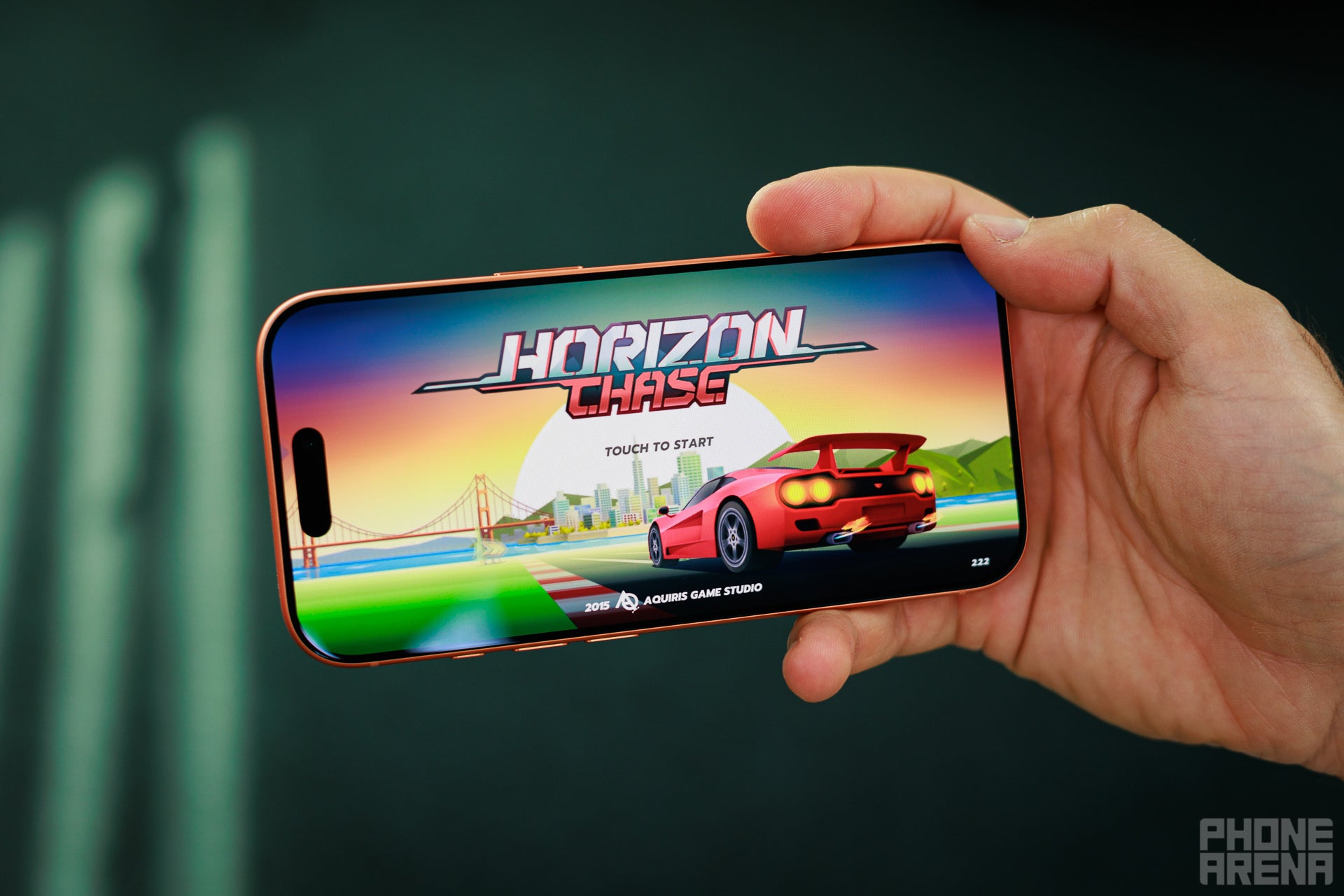
The iPhone 17 Pro is powered by the new A19 Pro chipset and the phone now also has 12GB of RAM.
And while you may be used to smartphone processors getting ever faster every year, this is indeed a very big leap for both CPU, but especially for the GPU performance.
First, the manufacturing process for this new chip is upgraded, as the A19 Pro uses TSMC N3P node vs N3E previously. Then, the type of RAM is also upgraded. The iPhone 17 Pro now uses LPDDR5X 9600 RAM with faster bandwidth of 76.8GB/s (up from 60GB/s on the previous Pro model).
Apple has also made big architectural changes to the CPU this year. It still uses 2x performance cores and 4x efficiency cores, but the small cores are reingeneered in a big way and they also now run at nearly 2.6GHz (up from 2.4GHz last year).
CPU Performance Benchmarks:
Apple has also made big architectural changes to the CPU this year. It still uses 2x performance cores and 4x efficiency cores, but the small cores are reingeneered in a big way and they also now run at nearly 2.6GHz (up from 2.4GHz last year).
All of this results in amazing single-core performance and solid-multi core numbers.
GPU Performance
In GPU testing, we see even bigger gains.
On 3D Mark's Solar Bay Extreme test, which is heavily focused on ray tracing, the A19 Pro GPU on the iPhone 17 Pro beats the one on the M3 iMac!
On the 3D Mark Wildlife Extreme stress test, the initial performance was on par with the Galaxy S25, but thanks to the vapor chamber cooling, the phone is able to maintain its performance far better. We see stability of around 65% to 70%. This is still not quite as good as dedicated gaming phones which can often achieve a stability rate of 95% (meaning they throttle very little), but it's much closer now.
You probably won't notice this in casual games, but you can really feel it if you play AAA games on your iPhone. And there seem to be more of those coming. Death Stranding, Resident Evil 4 are just some of the games now available and while they could barely hit 30fps on the iPhone 16 Pro series, you can now play them at nearly 50fps. That's incredible progress in just one year.
Vapor Chamber cooling
A lot of the improvements in the new iPhone also come from its efficient design combining an aluminum unibody, much more adept at dispersing heat, and a vapor chamber cooling that quickly transfers that heat away from the core.
In thermal imaging, you can clearly see the effects of that. While running performance tests, the iPhone 17 Pro heats up uniformly around the body, while the previous model has one big red spot around the processor, indicating that heat dissipation was indeed a problem on the 16 series.
While the iPhone 17 Pro hits around 42C degrees, the iPhone 16 Pro runs much hotter at nearly 45C. You can also see the benefit of the 17 Pro vs the glass back on the vanilla 17 model, which gets hotter at nearly 44C to 45C.
iPhone 17 Pro Software
We have now all experienced iOS 26 and the new Liquid Glass design, so there is not much to be said about the iPhone 17 Pro software apart from that.
While last year, Apple was generous with its AI promises, this year it almost seemed like it had forgotten about Apple Intelligence.
Not keeping that AI promise given with the iPhone 16 series has definitely left a mark on Apple, but we think that's actually good. Don't overpromise, just deliver.
What Apple did mention is that the A19 Pro chipset is perfectly tailored to handle on-device AI with neural accelerators in each GPU core. That's a good signal that the company plans some big AI unveilings next year, so let's wait and see.
iPhone 17 Pro Battery
Improvements
The iPhone 17 Pro specifically scores the biggest battery upgrade of all new models this year.
The US eSIM version has a 4,252 mAh battery. We tested the global model with a physical SIM card slot and a slightly smaller, 3,988 mAh battery.
Still, both of those options are a big upgrade over the 3,582 mAh battery on the 16 Pro.
PhoneArena Battery Test Results:
In our lab battery tests, we see some gains but only in some cases. On our lightest web browsing test, the 17 Pro scores a bit over 17 hours, a 30-minute improvement over the 16 Pro.
At the same time, video streaming has not changed at all at roughly 8 hours and a half.
In real life, we did notice a slight upgrade over the 16 Pro that we are using for a daily driver, but we'd need to spend a bit more time with the phone to be more conclusive.
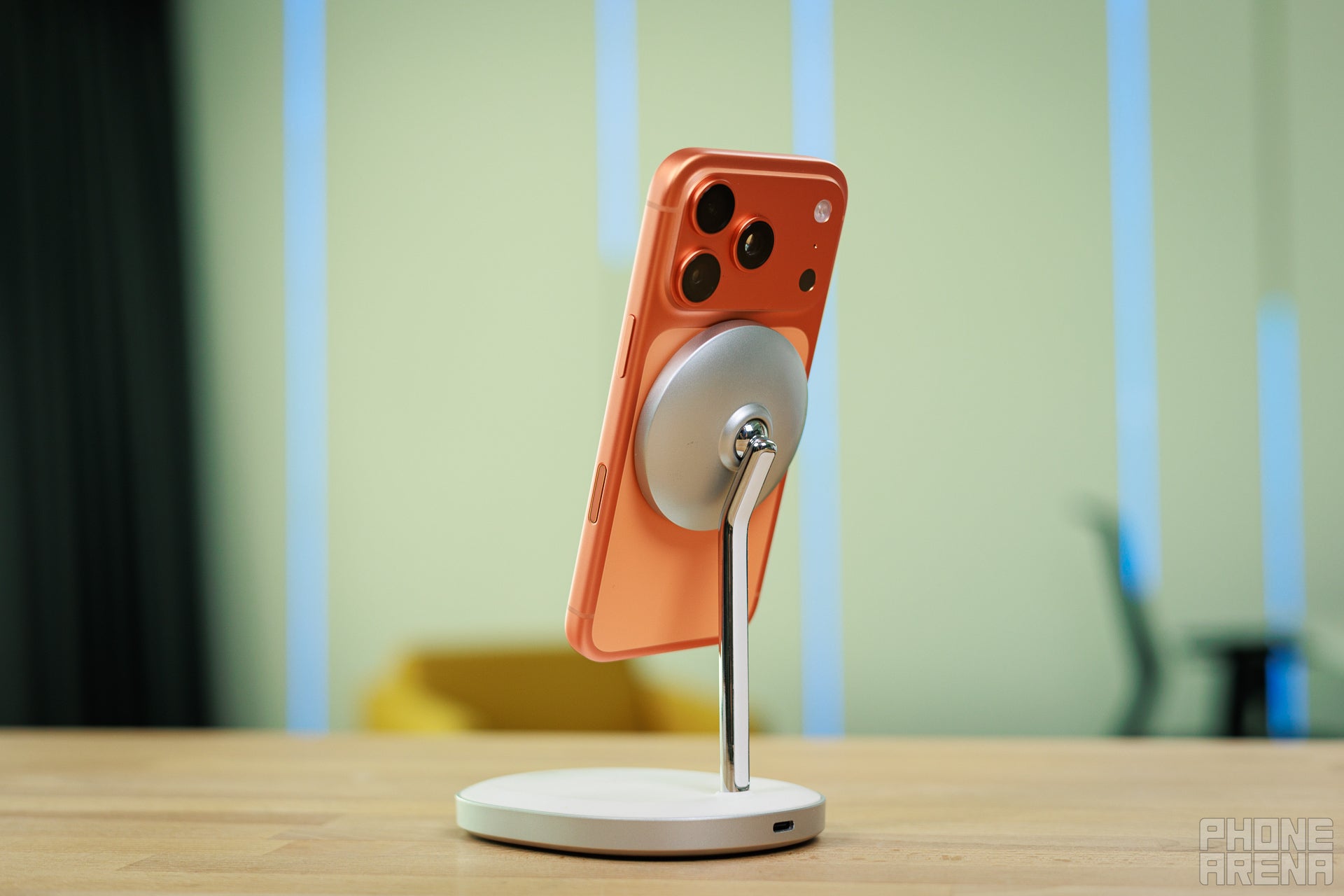
However, we don't need extra time to appreciate the much faster 40W wired charge.
Apple promises a 50% top-up in 20 minutes on the 17 Pro, up from 50% in 35 minutes on the 16 Pro. And that is indeed pretty much what we get.
Keep in mind that Apple recommends its new $40 40W Dynamic Power Adapter with 60W Max that uses a new USB-C PD protocol called AVS (Adjustable Voltage Supply). Android phones typically use a different protocol called PPS. The iPhone 17 does not support PPS, but that's not such a big deal. If you use a third-party charger like ones from Anker with PPS, the iPhone 17 Pro will fall back to the standard charging steps on the charger and you will only miss on the fine-grain voltage adjustments, but it will still fast charge. In other words, you will get almost the same charging speed.
As for wireless charging, we have 25W MagSafe, same as on the iPhone 16 series.
iPhone 17 Pro Audio Quality and Haptics
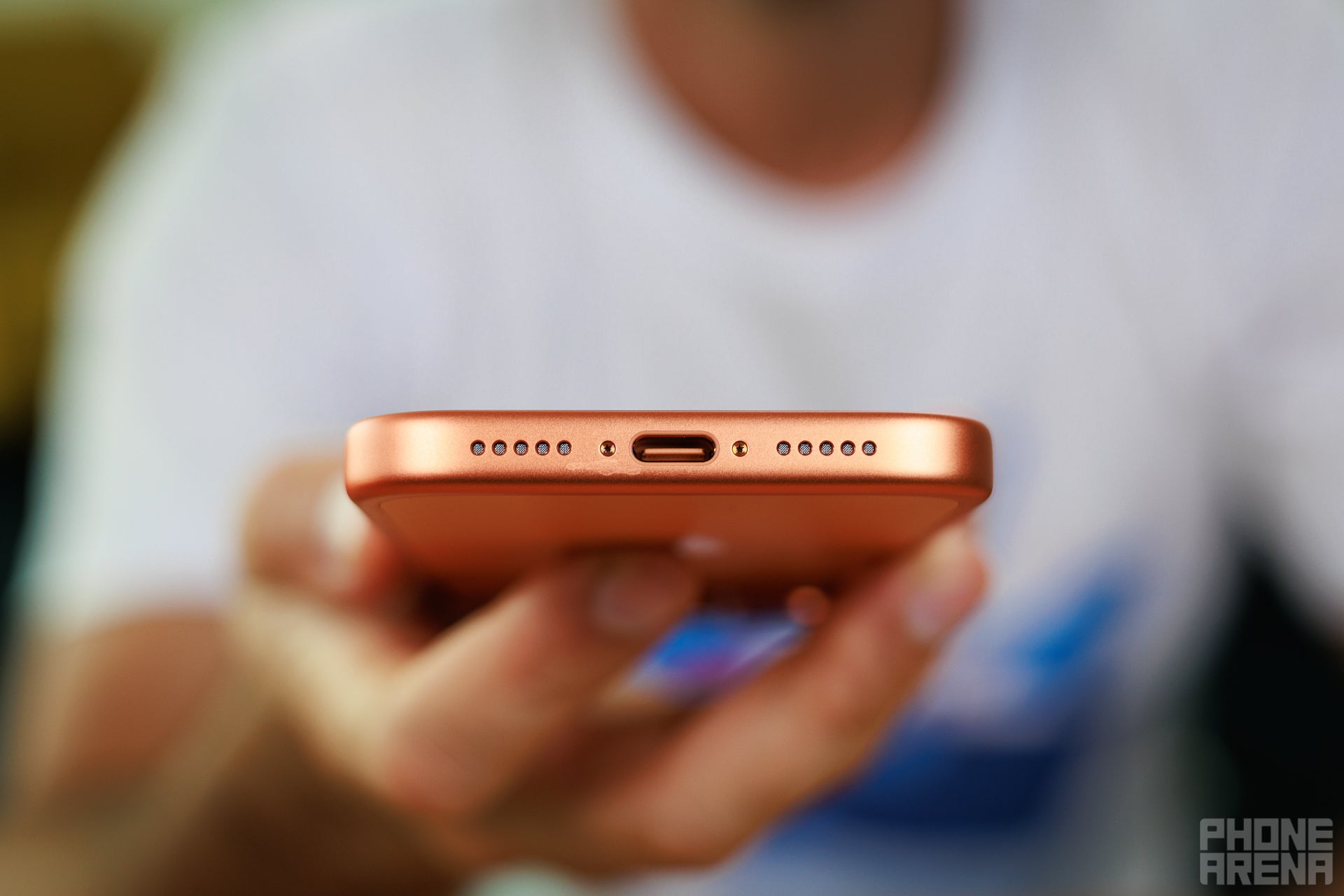
Strangely, the iPhone 17 Pro audio quality has changed quite a bit from the previous model. The 17 Pro does not get nearly as loud as its predecessor, which can be disappointing. Admittedly, at those loudest volumes the sound quality was distorted, but we still prefer having the option to blast sound loud and clear.
There are no issues with the clarity, though, and you still have a decent amount of bass. All of that, of course, is said in the context of smartphone audio, and naturally, you would be much better off listening to music from a speaker or headset.
There are also no changes to haptics, they feel tight and precise as usual with the Taptic Engine.
Should you buy it?
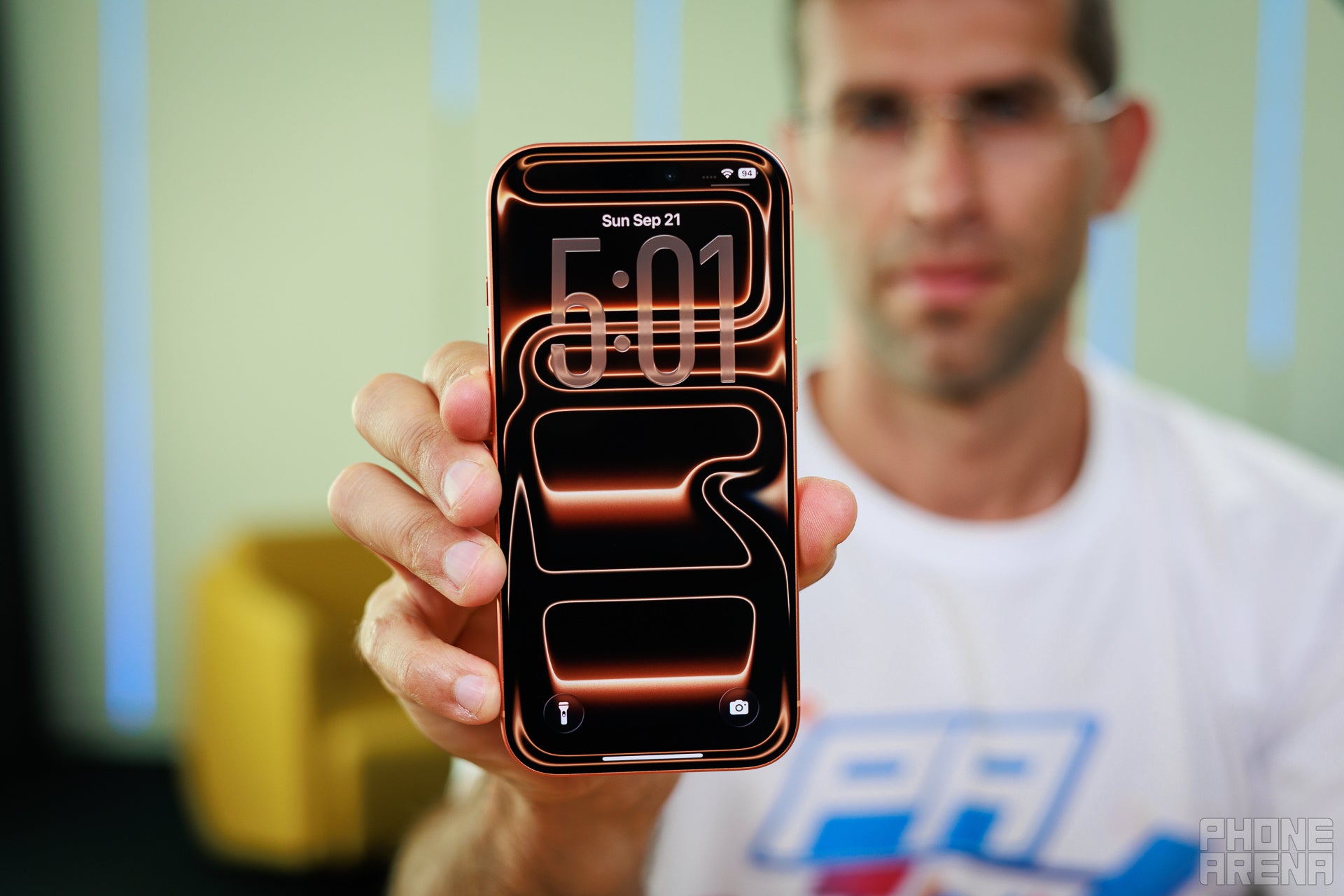
The iPhone 17 Pro is a bigger upgrade than it might seem at first, but it's still fundamentally an iPhone, like all others before it.
Enthusiasts who care about benchmarks, performance numbers and fancy cooling should definitely buy the iPhone 17 Pro. Its new processor is a big leap forward, much bigger than your typical yearly upgrade, and the device feels more future proof with 12GB of RAM. And same goes for the camera changes which will be appreciated by the enthusiast. The more practical 100mm 4X lens for zoom and portraits is nice, finally bringing the iPhone on par with Android rivals, and the new square Center Stage front camera is industry leading and clever.
Those who are not watching Apple events for recreation and are still happy rocking an iPhone 16 Pro or iPhone 15 Pro, however, should not be in much of a rush. The 17 Pro is a great iPhone, of course, and regular users might still appreciate the quality-of-life upgrades, things like the brighter screen, the subtle anti-reflective coating, the fact that it overheats a bit less, that it has much faster charging, and the new design. But for that group of regular users, it might be worth waiting for the next model after all.
Follow us on Google News


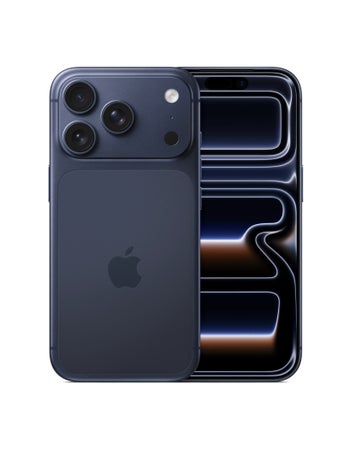

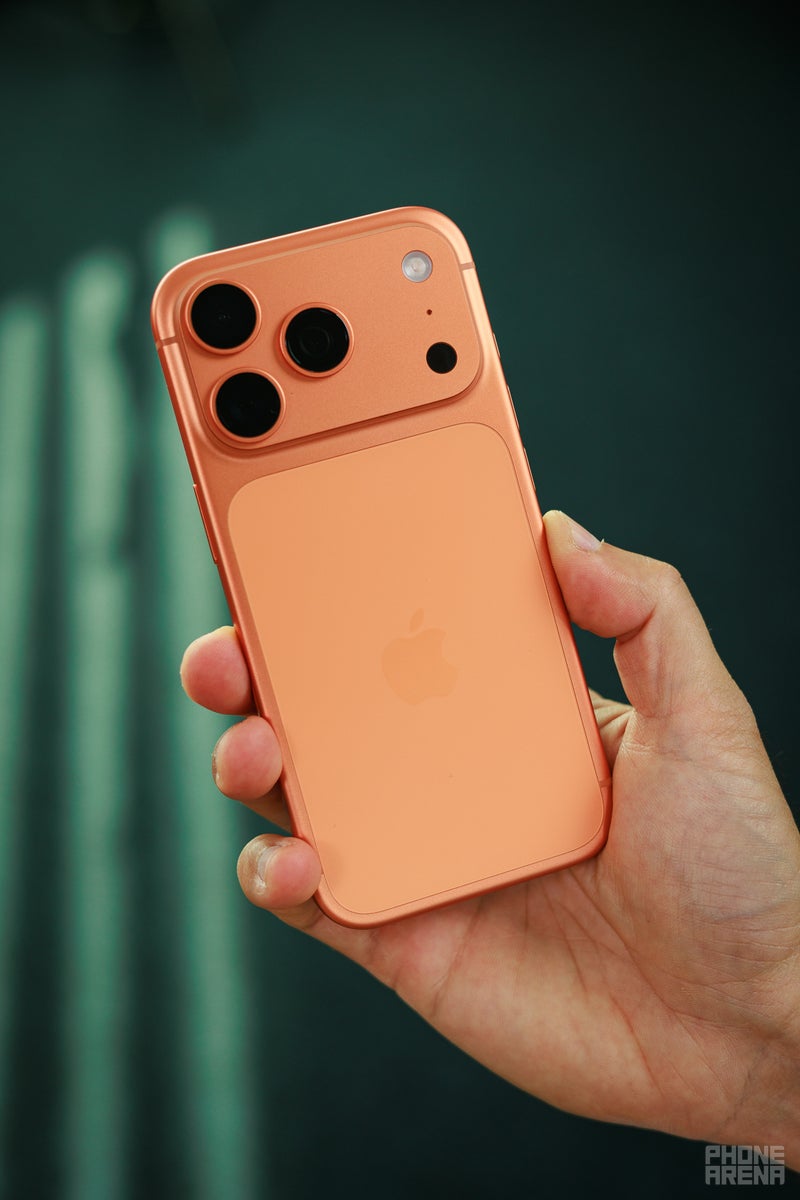
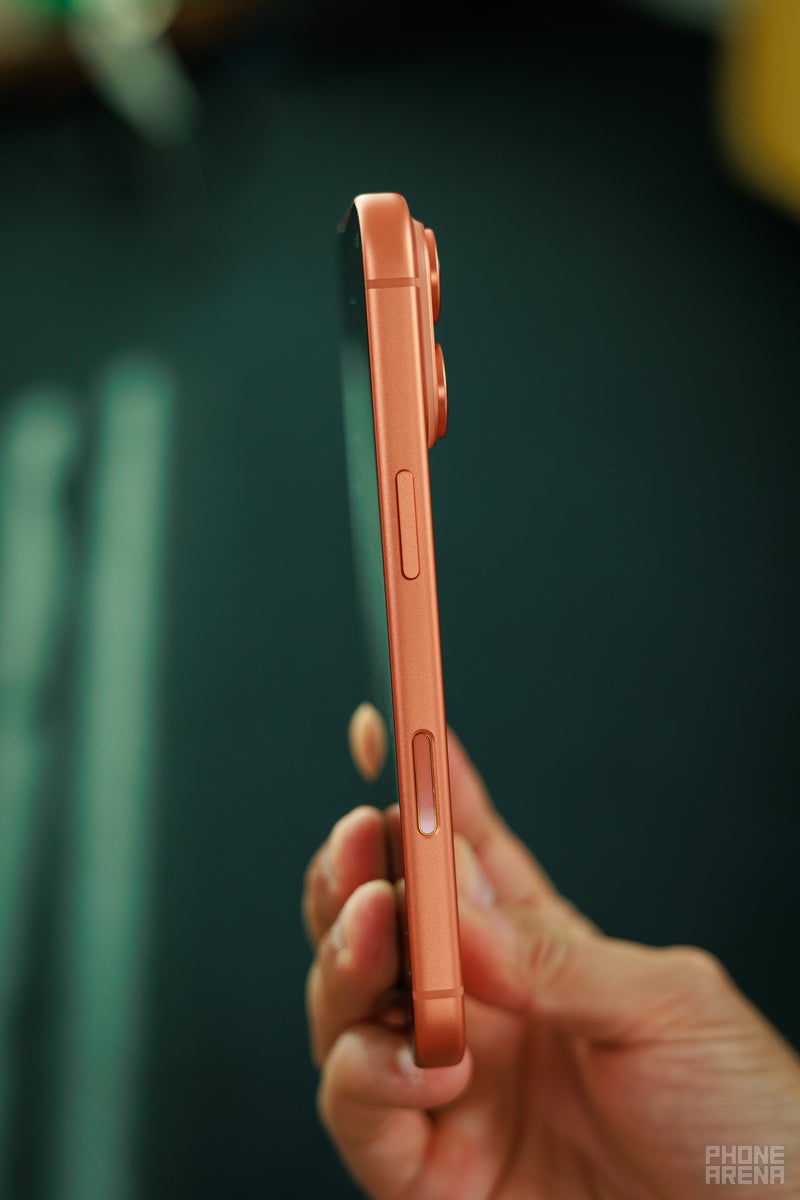
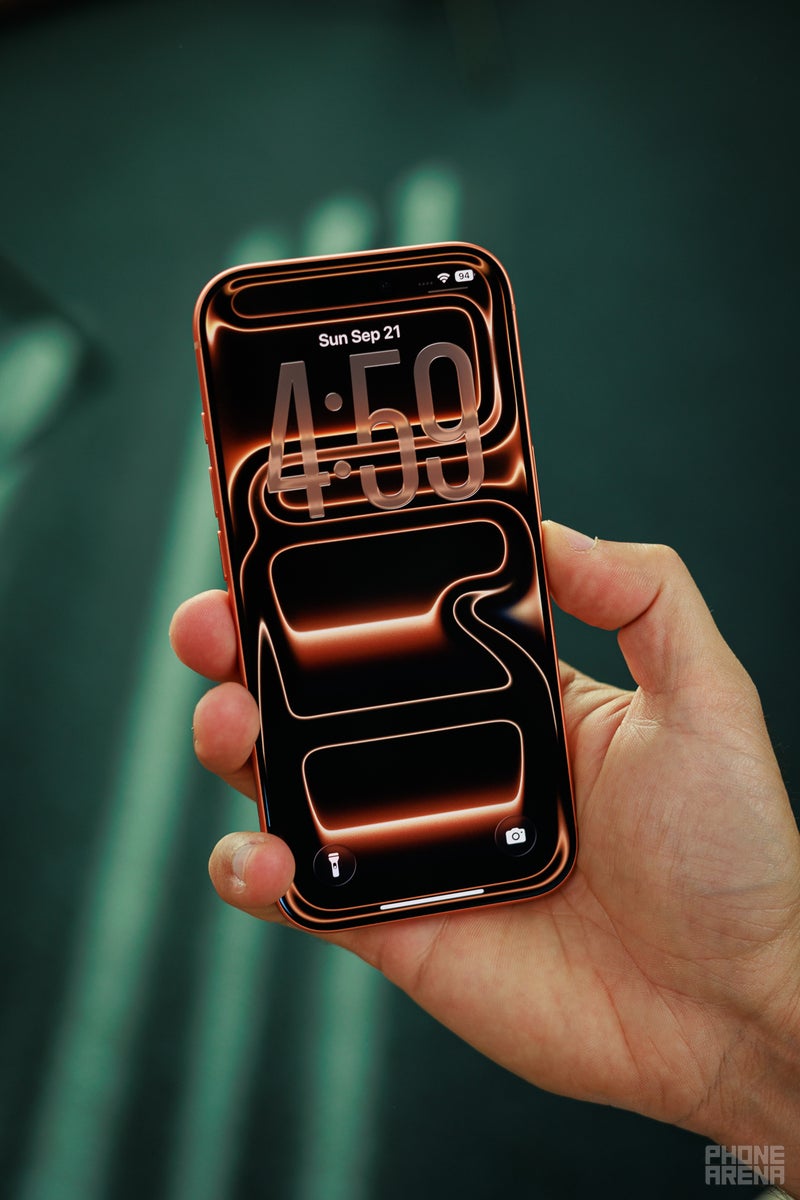

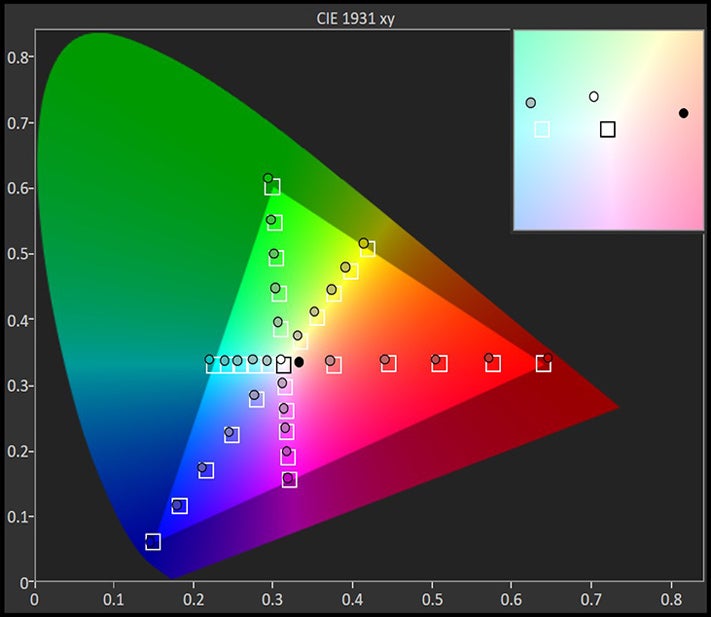













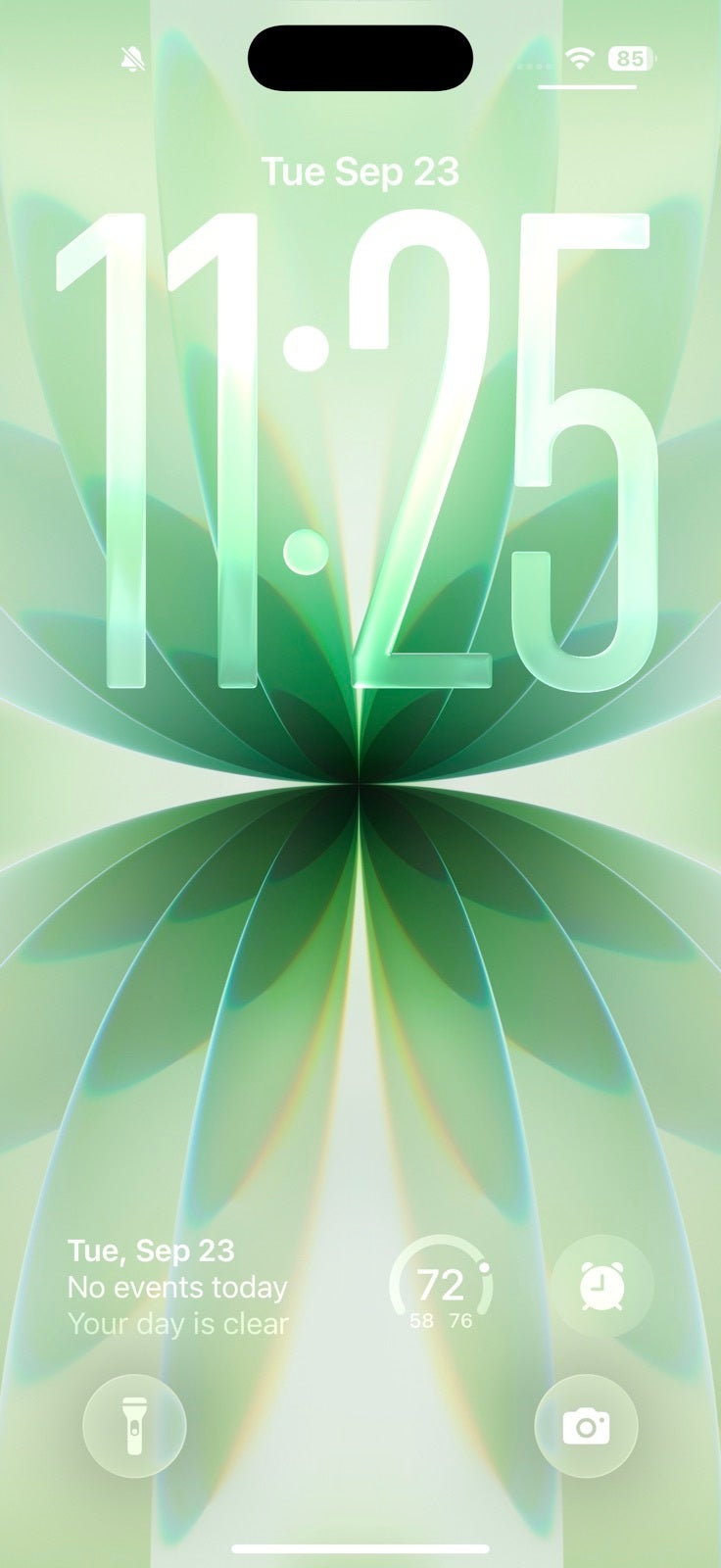
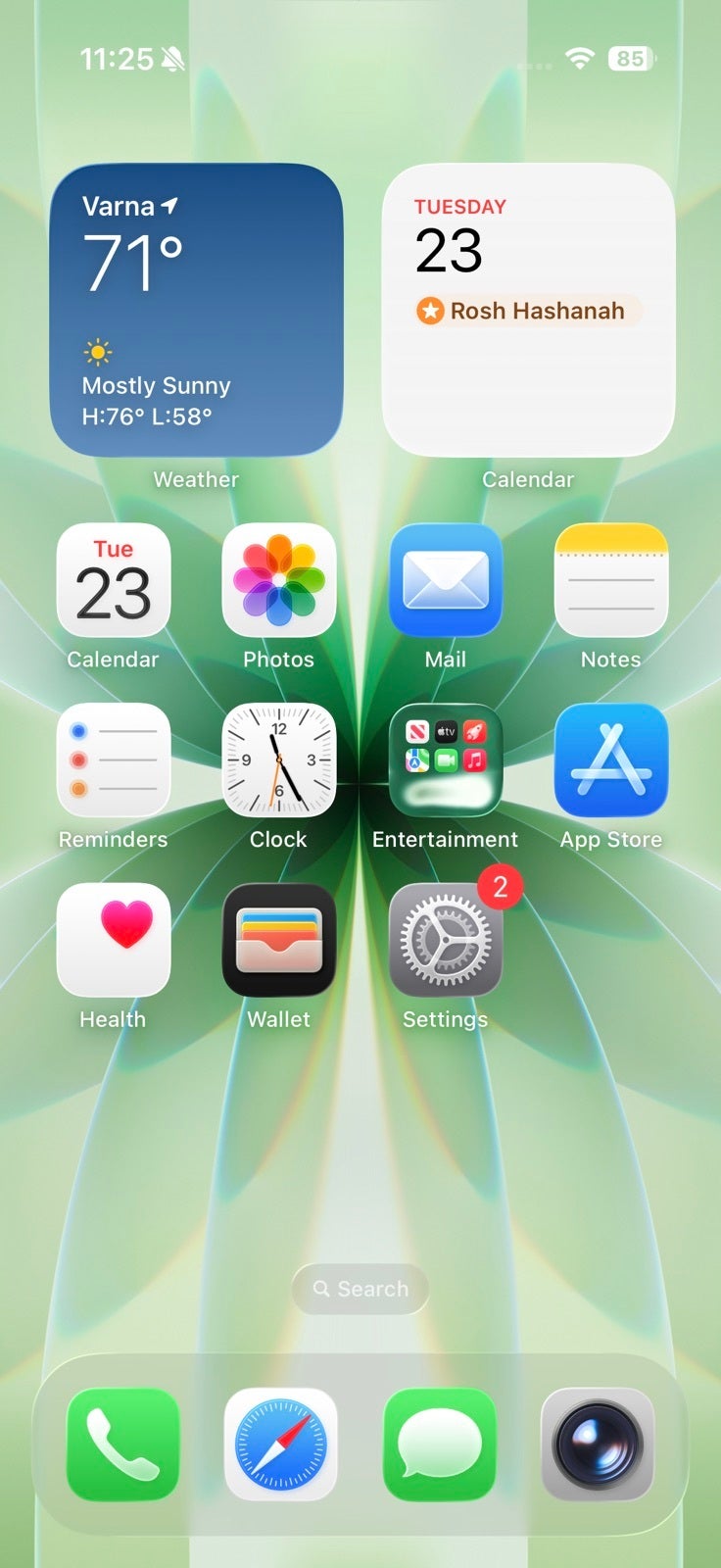
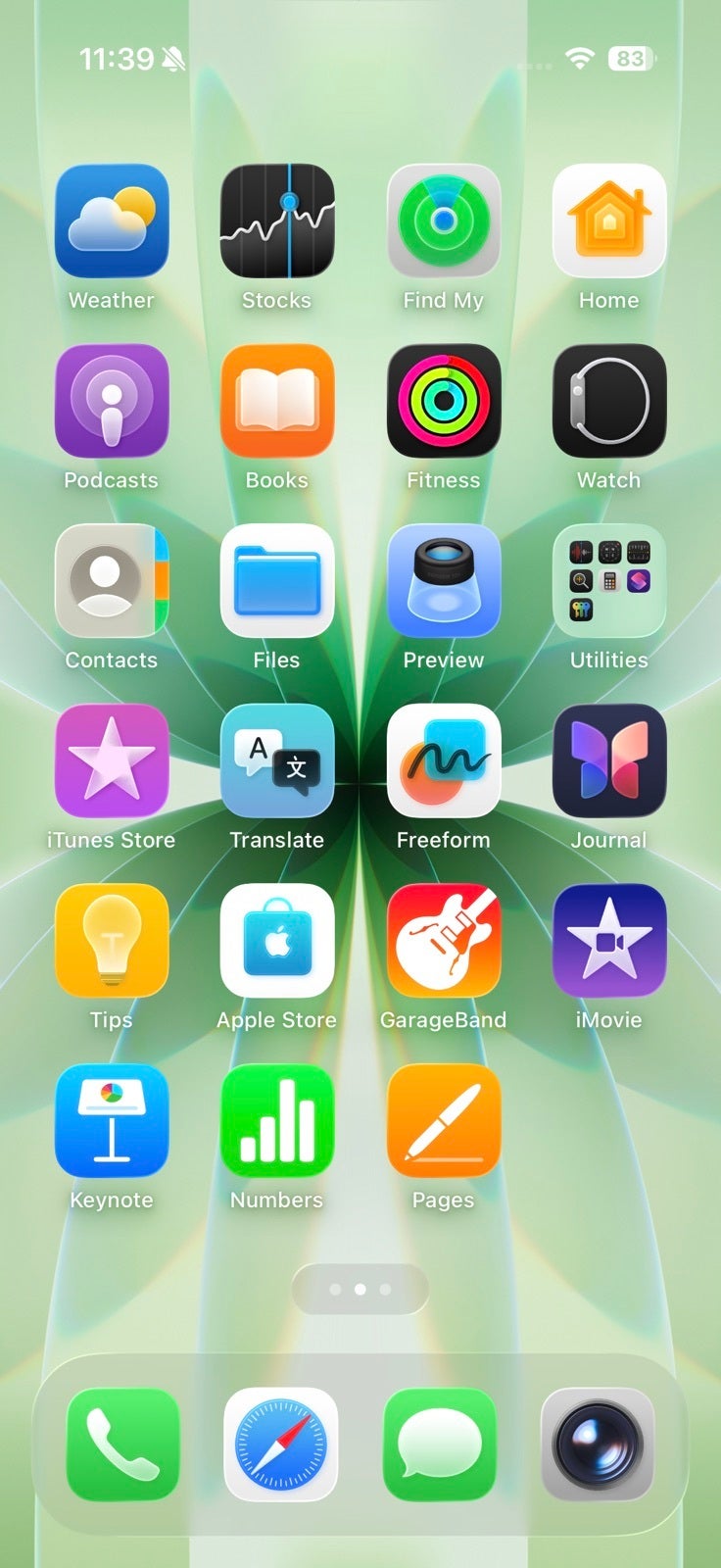
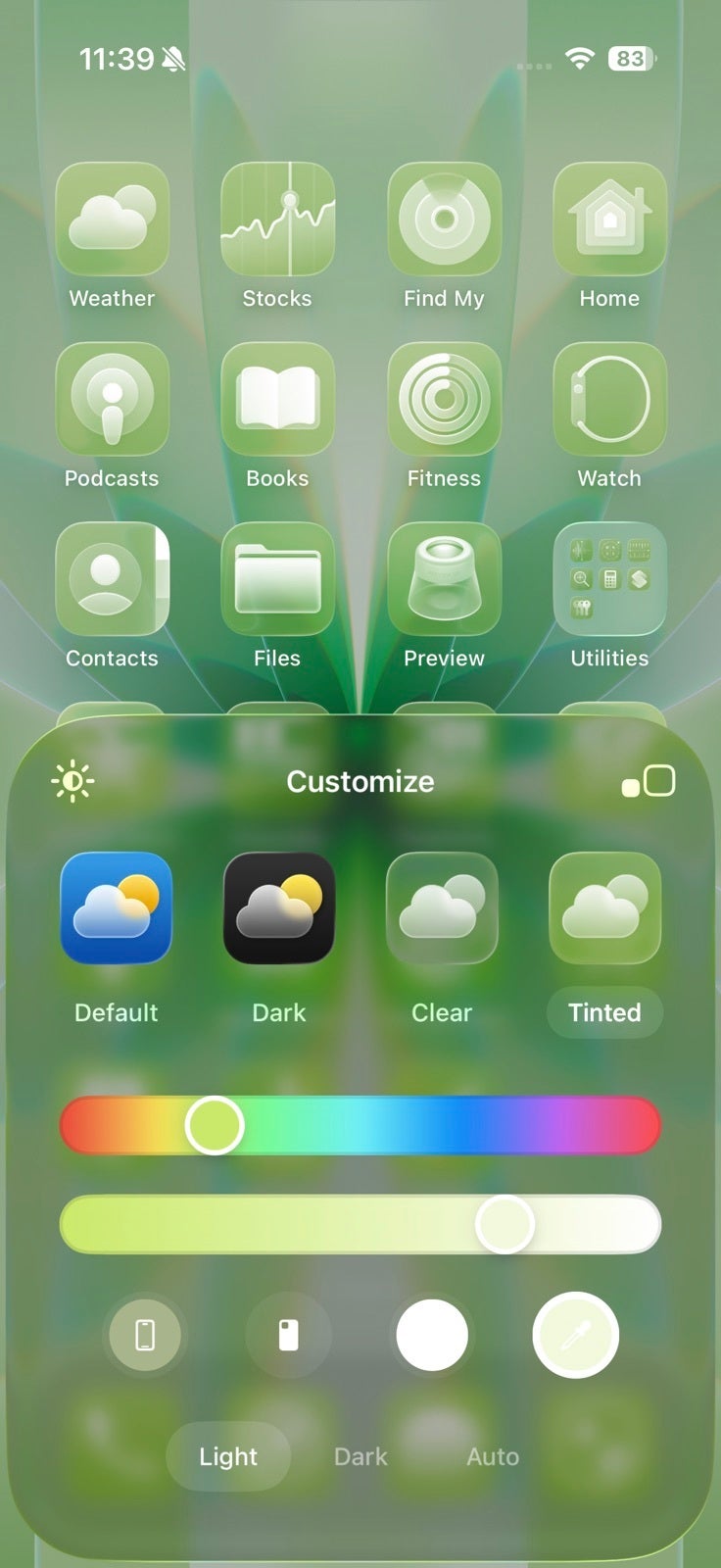
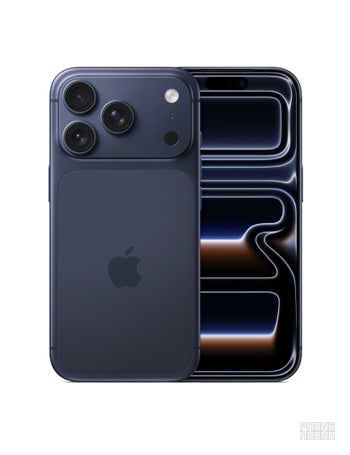


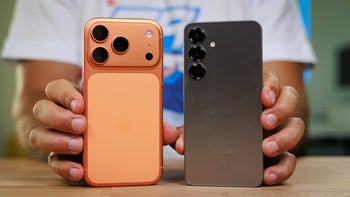
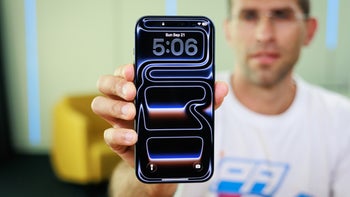
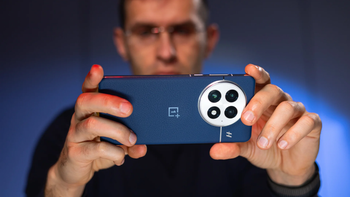
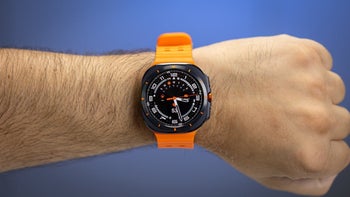
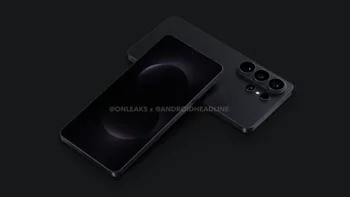
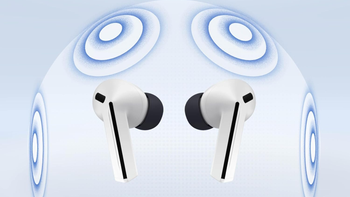
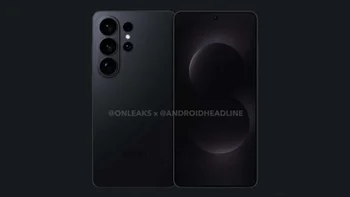

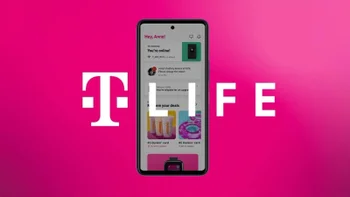


Things that are NOT allowed:
To help keep our community safe and free from spam, we apply temporary limits to newly created accounts: